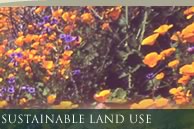State task force issues improved fire management guidance
A new approach promises greater fire safety and less loss of wildlife habitat
The California Wildfire & Forest Resilience Task Force is a state-federal-tribal collaboration to bring the best available science to landscape management and community protection. It recently issued recommendations for vegetation management that recognize the unique ecology of Southern California chaparral and coastal sage scrub (Managing Wildfire Risk in Southern California's Chaparral Landscapes: What Works & What Doesn't <
https://wildfiretaskforce.org/managing-wildfire-in-southern-californias-chaparral-landscapes/>).
The recommendations focus on what is called the “house out” approach – home hardening and defensible space, ignition control, early detection of fires, and strategic access for firefighting (fuel breaks). Landscape-scale vegetation removal are specifically called out as being ineffective. These methods lead to “type conversion” from native plants to highly flammable non-native weeds and grasses.
This Task Force approach reflects the best science and echoes EHL’s own advocacy efforts. As described above, our opposition to CalFire’s Vegetation Treatment Program was over its potential to accelerate type conversion through excessive native habitat removal.
We appreciate the role of state and federal agencies in bringing the recommendations forward and urge their rapid incorporation into everyday practice at Cal Fire, the US Forest Service, and local fire agencies.


